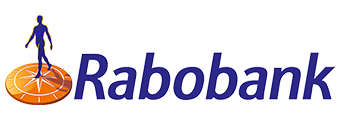
It's a conundrum that can be just as perplexing for seasoned professionals as it is for fresh graduates starting their first job. The answer isn't as simple as a single number; it's about understanding your financial health, lifestyle needs, and the implications of your rent on both.
How much are Aussies spending on rent in 2024?
Australia’s median rent price ticked up over $600 per week for the first time in December 2023, according to CoreLogic figures. It increased from $437 a week in August 2020.
InfoChoice’s Rent Crisis Survey revealed some interesting data on the state of the rental market. In a survey of more than 1,000 renters, we polled them on if they’re spending more than 30% of their income on rent, and cross-referenced it across reported income bands:
|
|
Total |
$0 - $18,200 |
$18,200 - $45,000 |
$45,000 - $120,000 |
$120,000 - $180,000 |
Over $180,000 |
|---|---|---|---|---|---|---|
|
No |
30.1% |
23.1% |
21.5% |
30.3% |
54.9% |
56.3% |
|
Yes |
69.9% |
76.9% |
78.5% |
69.7% |
45.1% |
43.8% |
This means 43.8% of those earning more than $180,000 are spending at least $1,038 a week on rent.
What is rental stress?
Simply put, rental stress refers to an individual or household spending a disproportionate amount of income on rent, leaving little for other necessities like food, bills, and savings. The most widely used definition of rental stress is a household spending more than 30% of its income on rent each week.
This is how the Australian Institute of Health and Welfare define rental stress, as well as the Australian Bureau of Statistics. It’s a broad one size fits all definition though that doesn’t always make sense to use. A household pulling in $3,000 a week after tax for example might have no problems living off $1,500 for other expenses, so are comfortable paying 50% of income on rent.
On the other hand, earners at the lower end of the spectrum might find it a struggle to lose 25% of their income to rent each week. University students who are earning say $300 a week from a part time job are likely in rental stress.
The simplest definition of rental stress might just be: if you feel like you’re in rental stress, you probably are.
Rent stress in 2024
Rental rates saw significant inflation throughout 2023. Over the year to the September '23 quarter, rental rates rose 7.6% according to the CPI indicator. While wage growth over this period was also significant (the wage price index rising 4%), it was outstripped by rental growth, which led to tenants paying a higher portion of income in rent.
Based on median income and median rental rates, CoreLogic estimates the average Australian tenant was spending 31% of income on rent, exceeding the normal threshold of rental stress. The InfoChoice Rent Crisis survey had even more alarming results: 69.9% of renters reported paying above the 30% mark. For Gen Z renters, this was up to 72.7%.
There is also seemingly a chronic undersupply of rental properties, with vacancy rates near all time lows, while December 2023 saw a record low number of rental properties available on Realestate.com.au.
It looks like a bleak outlook for Australian tenants, but Domain Chief of Research and Economics Dr Nicola Powell says there are some “glimmers of hope” for Australian renters.
“Looking ahead, several factors are slowing rental growth: stretched affordability, more renters opting for house shares and a slow return of investors over 2023,” Ms Powell said.
“[This] will continue to play out in 2024.
“We are also likely to see some renters transitioning to homeownership with the new first home buyer incentives in place.”
How much income should you spend on rent?
As we mentioned, 30% of income is a benchmark, not a hard and fast rule. Several factors can influence how much of your income should go towards rent.
Location
For some people who need to live in areas where rental demand is strong, spending a higher portion of income on rent is less of a choice. Living in a major city or a high-cost area can skew the percentage higher due to the inflated rental market. In areas where rental demand is lower, you might be able to comfortably spend less than 30% on rent.
Income
Higher earners might be able to spend a larger percentage on rent for a more desirable living situation, relying on the fact that a smaller portion of disposable income is still sufficient for other expenses.
Lifestyle
Your lifestyle is another key consideration. If say, you work from home, you’re going to be spending a lot of time in the property. You might therefore decide it’s worth spending a bit extra for a more suitable property. For people who work away for extended periods, or frequently stay at a partners house, it might not make sense to be spending exorbitant amounts on rent since you aren’t home all that much.
Priorities
It’s also worth figuring out exactly what your long term priorities are, financial and otherwise. If you are desperate to get into the property market as soon as possible, it might be worth sacrificing that extra bathroom and putting the money you’re saving on rent towards a deposit.
Debt and Financial Obligations
Existing debts, student loans, or other financial commitments can impact how much you can afford to spend on rent. If say, 20% of your income goes towards loan repayments, you might have to cap the maximum you can afford on rent a bit lower.
Need somewhere to store cash and earn interest? The table below features savings accounts with some of the highest interest rates on the market.
The most rent stressed regions in Australia
According to CoreLogic, these are the 25 highest SA3 regions in Australia by median rents as a proportion of median income, as of Q3 2023. Scrolling through this list, you might notice a recurring theme: most of these areas are lifestyle spots, on the coast.
Demand for property in these spots is high, and it might also reflect the lifestyle and priorities of some residents. Some people might not be able to imagine not living on the coast, so are willing to make sacrifices elsewhere in order to rent in a beachside suburb.
|
Region |
SA3 |
Median rent as a portion of median income |
|
|
1 |
Greater Brisbane |
Bribie - Beachmere |
52.40% |
|
2 |
Rest of NSW |
Tweed Valley |
52.30% |
|
3 |
Rest of NSW |
Richmond Valley - Coastal |
49.20% |
|
4 |
Rest of Qld |
Gold Coast - North |
49.00% |
|
5 |
Rest of NSW |
Great Lakes |
48.10% |
|
6 |
Rest of Qld |
Coolangatta |
48.10% |
|
7 |
Rest of Qld |
Southport |
47.40% |
|
8 |
Rest of Qld |
Noosa |
46.30% |
|
9 |
Rest of Qld |
Surfers Paradise |
46.20% |
|
10 |
Greater Sydney |
Pittwater |
46.00% |
|
11 |
Rest of Qld |
Broadbeach - Burleigh |
45.10% |
|
12 |
Rest of Qld |
Hervey Bay |
44.70% |
|
13 |
Rest of Qld |
Robina |
44.60% |
|
14 |
Rest of Qld |
Maryborough |
43.10% |
|
15 |
Rest of NSW |
Coffs Harbour |
42.70% |
|
16 |
Rest of NSW |
Kempsey - Nambucca |
42.50% |
|
17 |
Rest of NSW |
Port Macquarie |
42.00% |
|
18 |
Greater Sydney |
Bankstown |
41.80% |
|
19 |
Rest of Qld |
Maroochy |
41.80% |
|
20 |
Rest of Qld |
Gympie - Cooloola |
41.60% |
|
21 |
Rest of Qld |
Caloundra |
41.40% |
|
22 |
Rest of Qld |
Nerang |
41.40% |
|
23 |
Rest of WA |
Kimberley |
41.40% |
|
24 |
Rest of NSW |
Clarence Valley |
41.20% |
|
25 |
Australian Capital Territory |
Canberra East |
41.00% |
Meanwhile, these were the 25 spots where median rent as a portion of median income is lowest. This list is dominated by rural, inland spots, where demand for housing might not be as strong, meaning less pressure on rental rates.
|
Region |
SA3 |
Median rent as a portion of median income |
|
|
1 |
Rest of Qld |
Central Highlands (Qld) |
19.00% |
|
2 |
Australian Capital Territory |
Uriarra - Namadgi |
19.70% |
|
3 |
Rest of Qld |
Biloela |
20.30% |
|
4 |
Rest of SA |
Outback - North and East |
21.90% |
|
5 |
Australian Capital Territory |
Molonglo |
22.00% |
|
6 |
Greater Melbourne |
Wyndham |
22.10% |
|
7 |
Rest of Qld |
Outback - North |
22.40% |
|
8 |
Greater Melbourne |
Melton - Bacchus Marsh |
22.70% |
|
9 |
Rest of Qld |
Bowen Basin - North |
22.90% |
|
10 |
Greater Melbourne |
Sunbury |
23.30% |
|
11 |
Rest of Qld |
Outback - South |
23.30% |
|
12 |
Greater Melbourne |
Maribyrnong |
23.50% |
|
13 |
Australian Capital Territory |
South Canberra |
23.60% |
|
14 |
Rest of NSW |
Bourke - Cobar - Coonamble |
24.10% |
|
15 |
Rest of WA |
Goldfields |
24.10% |
|
16 |
Greater Melbourne |
Macedon Ranges |
24.30% |
|
17 |
Rest of NSW |
Griffith - Murrumbidgee (West) |
24.30% |
|
18 |
Rest of Vic. |
Barwon - West |
24.30% |
|
19 |
Rest of NSW |
Lower Murray |
24.50% |
|
20 |
Rest of WA |
Wheat Belt - South |
24.60% |
|
21 |
Greater Melbourne |
Essendon |
24.70% |
|
22 |
Australian Capital Territory |
Gungahlin |
24.80% |
|
23 |
Australian Capital Territory |
Weston Creek |
25.00% |
|
24 |
Greater Melbourne |
Stonnington - East |
25.00% |
|
25 |
Rest of NSW |
Moree - Narrabri |
25.00% |
Data from CoreLogic. Note a slight limitation: median household income was used, but households that rent tend to have lower income.


